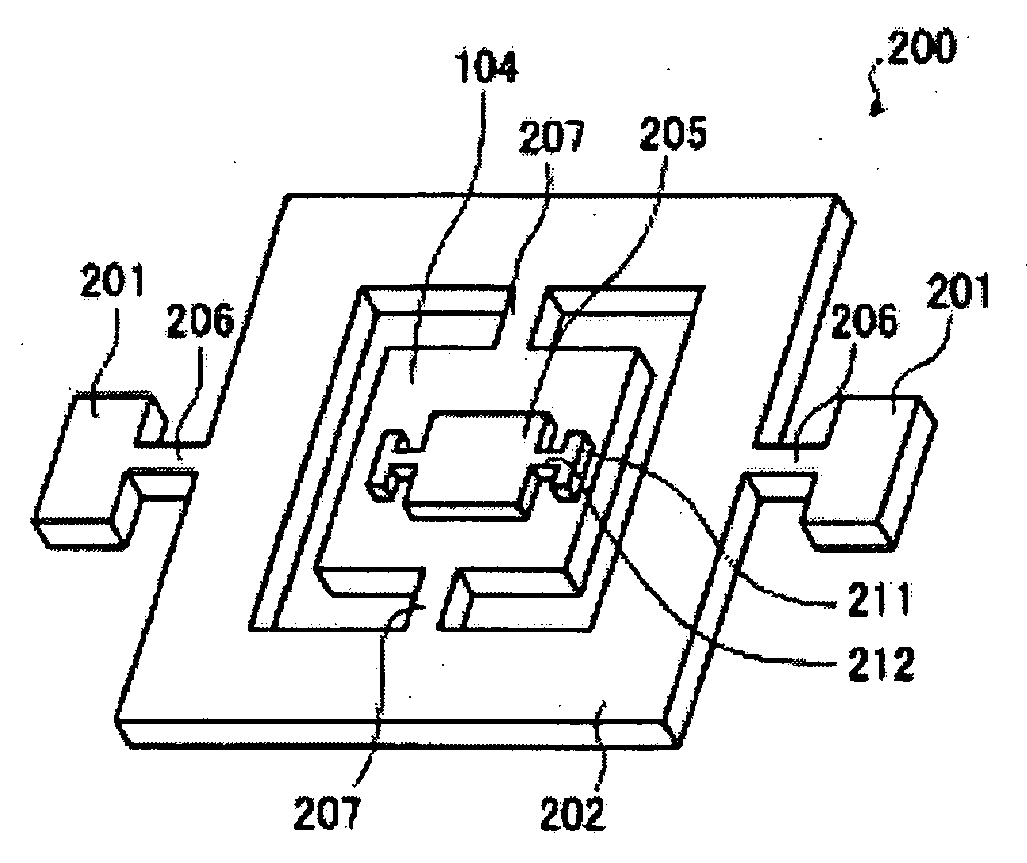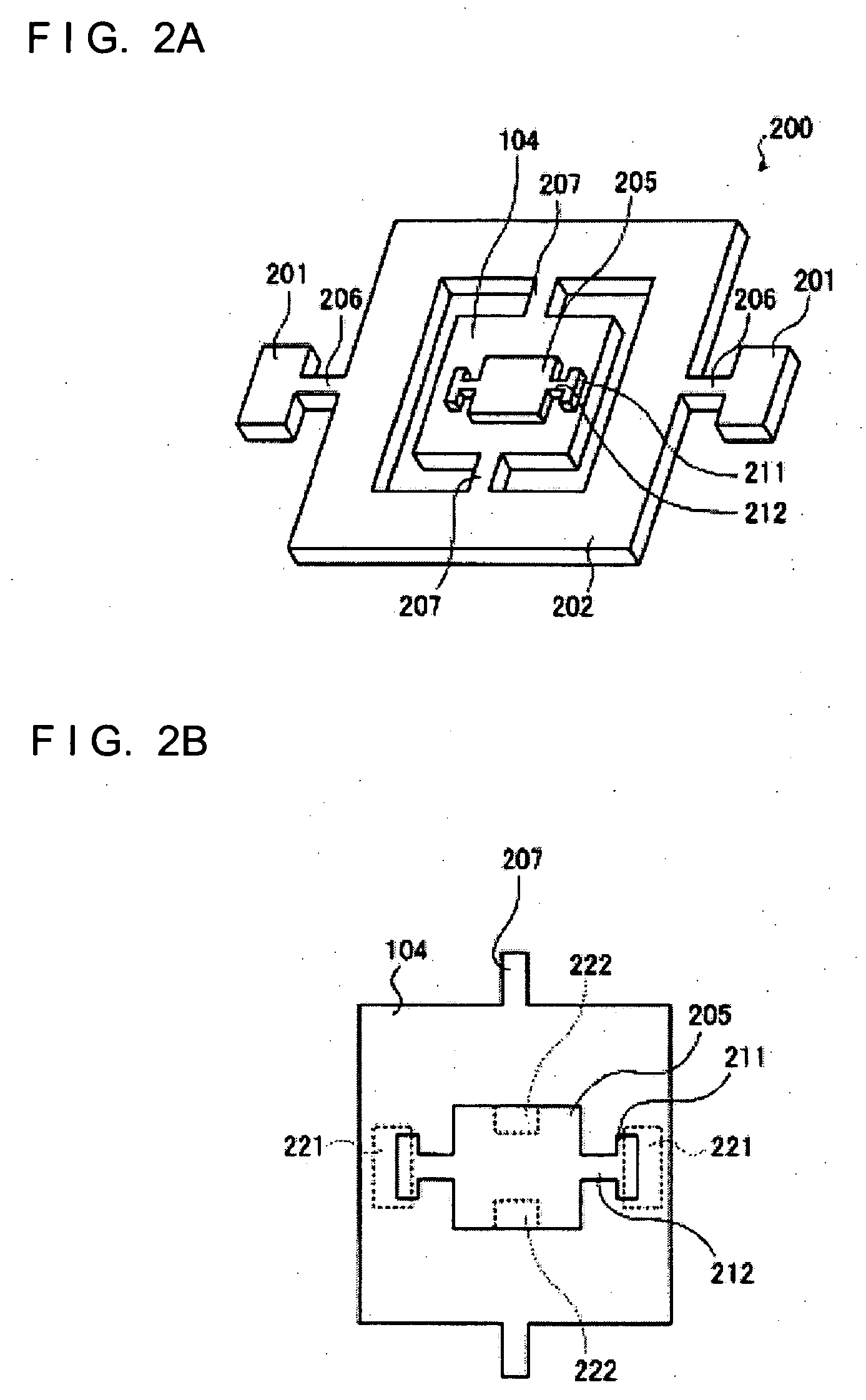Light scanning device and image display apparatus
a light scanning device and image display technology, applied in the field of light scanning devices and image display apparatuses, can solve the problems of deteriorating image quality, difficult to regenerate a new image signal corresponding, and the difficulty of the light scanning device to scan the laser beam to a correct position
- Summary
- Abstract
- Description
- Claims
- Application Information
AI Technical Summary
Benefits of technology
Problems solved by technology
Method used
Image
Examples
first embodiment
[0041]FIG. 1 shows a schematic drawing of an image display apparatus 100 according to a first embodiment of the invention. The image display apparatus 100 is a so-called rear projector configured in such a manner that a laser beam is supplied on one of the surfaces of a screen 110 and a viewer observes the light beam emitted from the other surface of the screen 110 to see an image. A light scanning device 120 provided in the image display apparatus 100 causes the laser beam to be scanned by a scanning unit 200. The image display apparatus 100 displays the image on the screen 110 surface which is a predetermined surface by the light beam from the light scanning device 120.
[0042] A light source 101 supplies a red laser beam, a green laser beam, and a blue laser beam, as light in the form of a beam, after having modulated according to image signals. The light source 101 may employ a semiconductor laser or a solid laser provided with a modulating section for modulating the laser beam. ...
second embodiment
[0073]FIG. 9 is an explanatory drawing showing the positional correction of the laser beam with the light scanning device according to a second embodiment of the invention. The light scanning device of this embodiment can be applied to the image display apparatus 100 according to the above-described first embodiment. Description of the portions overlapped with those in the first embodiment will be omitted. In the first embodiment, the reflection mirror is provided on the movable member connected to the outer frame. In contrast, this embodiment is characterized in that the position of the light beam to be scanned is corrected by the reflection mirror connected to the outer frame.
[0074] A graph shown in FIG. 9 represents the amplitude on the axis of ordinate and the frequency on the axis of abscissas, and illustrates an example of the amplitude of the reflection mirror with respect to the driving frequency. The reflection mirror is displaced so as to reflect the laser beam from the l...
third embodiment
[0090]FIG. 17 shows a schematic structure of an image display apparatus 1700 according to the third embodiment of the invention. Parts identical to those in the first embodiment are represented by the identical reference numerals, and overlapped description is omitted. The image display apparatus 1700 is a so-called front projecting type projector which supplies the laser beam to a screen 1705 provided on the viewer's side and a viewer observes the light beam reflected on a screen 1705 to see the image. The image display apparatus 1700 has the light scanning device 120 as in the first embodiment.
[0091] A light-emitting window 1710 formed of a transparent material such as glass or transparent resin is provided on the surface of the image display apparatus 1700 on the viewer's side. The laser beam from the light scanning device 120 passes through the light-emitting window 1710 and then enters the screen 1705. By employing the light scanning device 120, the laser beam can be scanned a...
PUM
 Login to View More
Login to View More Abstract
Description
Claims
Application Information
 Login to View More
Login to View More - R&D
- Intellectual Property
- Life Sciences
- Materials
- Tech Scout
- Unparalleled Data Quality
- Higher Quality Content
- 60% Fewer Hallucinations
Browse by: Latest US Patents, China's latest patents, Technical Efficacy Thesaurus, Application Domain, Technology Topic, Popular Technical Reports.
© 2025 PatSnap. All rights reserved.Legal|Privacy policy|Modern Slavery Act Transparency Statement|Sitemap|About US| Contact US: help@patsnap.com



